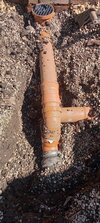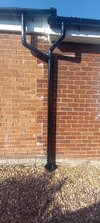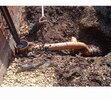Hello,
I have recently had a plastic bottle gully and drain installed connecting to the combined sewer. The downpipe serves a flat roofed extension and part of the main roof so gets a lot of water during downpours. I've noticed in heavy rain that the gully is overflowing a bit, but if I reach in and pull out the grey plastic insert, then put it back in, the problem immediately goes away. Like it is being caused by an airlock or something. There's nothing in there like debris, just the inner grey sleeve thing which has fins down the side and goes in track things within the main gully.
How do I prevent this so I don't have to go fiddling about in the rain?
Thanks
I have recently had a plastic bottle gully and drain installed connecting to the combined sewer. The downpipe serves a flat roofed extension and part of the main roof so gets a lot of water during downpours. I've noticed in heavy rain that the gully is overflowing a bit, but if I reach in and pull out the grey plastic insert, then put it back in, the problem immediately goes away. Like it is being caused by an airlock or something. There's nothing in there like debris, just the inner grey sleeve thing which has fins down the side and goes in track things within the main gully.
How do I prevent this so I don't have to go fiddling about in the rain?
Thanks




